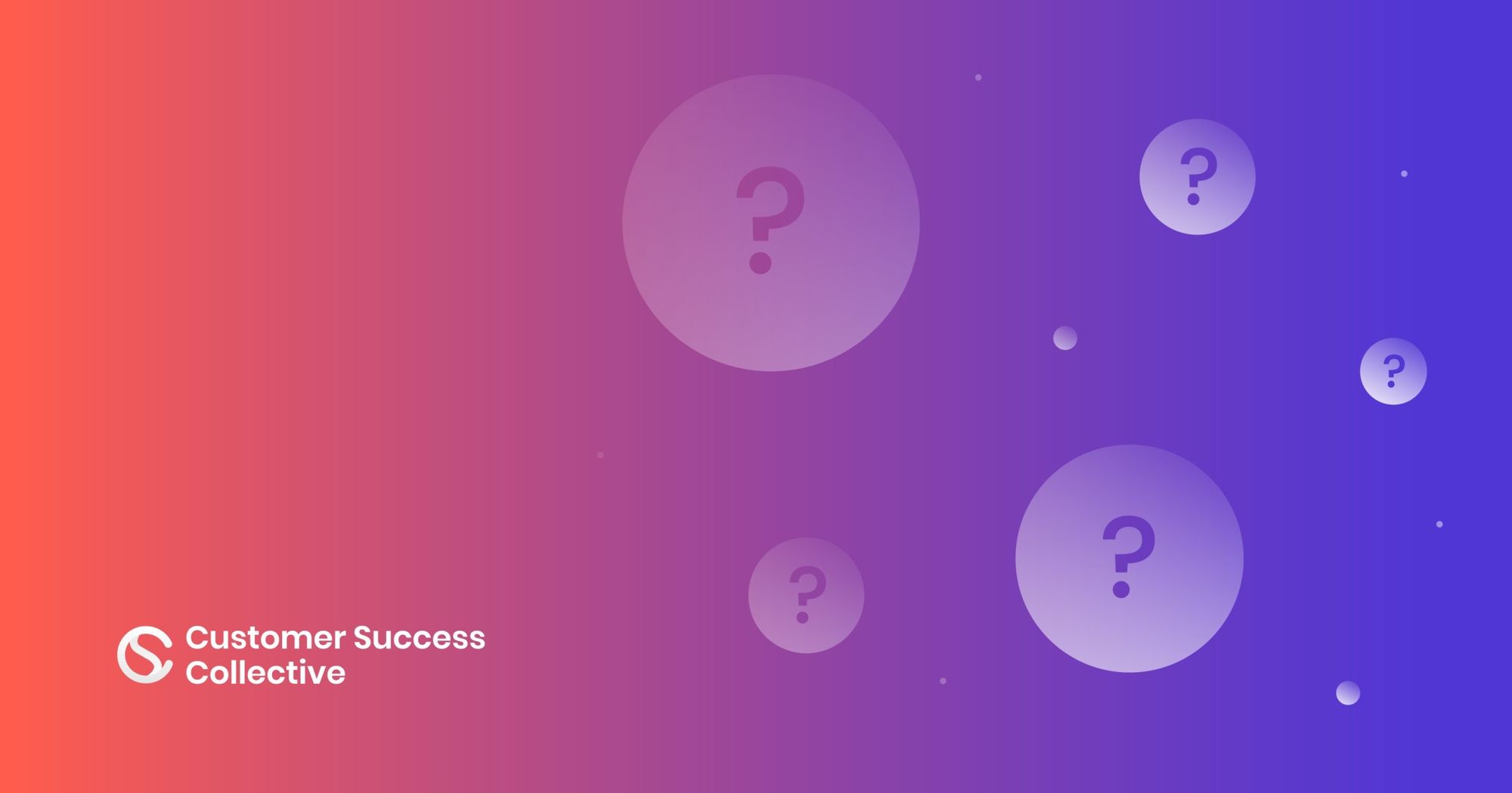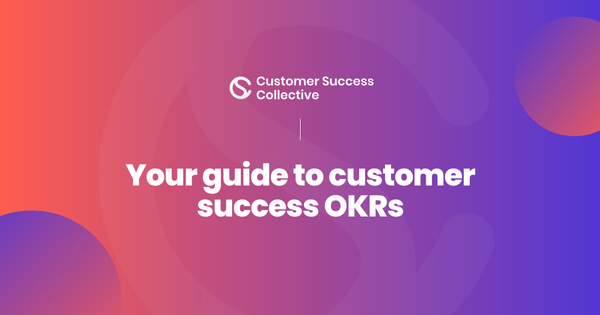It can be challenging to know which goals to set for your customer success team. Where do you start, for one? Secondly, how should you implement OKRs?
Being able to establish and execute clear OKRs is an extremely important part of any customer success team’s, well, success. OKRs bring focus and alignment to a customer success strategy, helping individuals, teams, and whole companies prioritize their initiatives.
In this article, we’re going to go into depth about what OKRs you should be setting for your customer success needs and how to implement them.
Here’s a complete breakdown of what’s in this guide:
- What OKRs in customer success look like,
- How to set OKRs,
- Examples of customer success OKRs, and
- Aligning your customer success team with OKRs.
Shall we get on with it? Your OKRs aren’t going to create themselves, after all!
What are OKRs?
OKRs are one of the many management acronyms that get flung about meetings or email threads. They stand for Objectives and Key Results (OKRs). An OKR functions as a goal-setting framework to help individuals and teams keep tabs on their targets and help them improve.
An OKR is a business compass that helps them identify two things:
- What they need to achieve, and
- How they will achieve it.
Both components are different. The “objectives” tend to be more qualitative statements, of what you aspire to change by the end of the quarter or year. The “key results” are different. These will define how success is measured.
Unfortunately – or fortunately, depending on your outlook! – OKRs will vary from company to company and are heavily influenced by a number of factors, such as:
- Company size,
- Maturity of customer success function,
- Company lifecycle stage,
- Industry, and
- External factors e.g. market condition, and stability of the economy.
Before setting your OKRs, you’ll need to listen to other parts of your business and detect what are the overarching goals for this quarter or year, and decide on the best course of action. It might be that your business experienced a plateau in sales during the summer months, and customer success needs to prioritize customer retention to combat this lull.
What’s the difference between OKRs and KPIs?
While similar in nature to their business cousin, KPIs (Key Performance Indicators), OKRs are slightly different. Where a KPI tracks your progress and focuses on the outcome, an OKR is concerned with the larger picture.
Both are concerned with progress within a specific timeframe, but an OKR dictates the KPI.
An OKR will define measurable steps an individual, team, or company will take to reach those goals; a KPI is a granular metric that evaluates the success of an individual, a project, or an entire team in meeting that OKR.

Why are OKRs important in customer success?
Customer success goes way beyond a team or department. It’s a business outlook that aims to transform the way businesses consider their customers. It’s about improving the customer experience and feeling confident to use the products and services available to them. It’s about recognizing the value of the product they bought. It’s about customer empowerment.
Naturally, this transformation from brand-new user to empowered advocate doesn’t happen overnight. In fact, it requires a healthy amount of planning and goal-setting to keep it on course. This is where OKRs shape the direction of a customer success team strategy, providing weight and direction to help prioritize the many initiatives on a customer success team’s plate.
Where customer success has been born out of customer support during the SaaS boom, it's more important now than ever to distinguish customer success from support. Both work in tandem, but a CS team needs to clarify how their efforts are having a proactive impact on the company’s value and revenue.
Time and time again, customer success is either treated as a support function or a cost center; constantly putting out fires reduces a CSM’s capacity to focus on value-led strategic plans. The mission of CS is often misunderstood by other departments in a business.
Hitting your OKRs sends a clear signal to the wider business: that customer success is worth investing in and generates significant revenue through retention and account expansion opportunities.

How to set OKRs for customer success
As mentioned earlier, OKRs are strategic tools to help prioritize areas of business to focus on and develop. When deciding upon your OKRs for customer success, you’ll want to closely examine the fundamental phases in customer success:
Once you’ve established which area your business needs attention, you can then tailor your strategy to support this. From there, team members can execute initiatives to drive customer success OKRs:
- Education (during the implementation stage)
- Live support (during the adoption stage)
- Inbound requests (during the growth stage)
- Follow-ups (during the renewal stage)
Rather than scrambling to react to the ever-changing desires of customers, a thoughtful approach to customer success Objectives and Key Results allows teams to get ahead of the curve.
When customer success professionals take the time to craft smart OKRs, they can preemptively provide the services and support each client truly needs. This proactive strategy leads to better outcomes for both the business and its users.

Examples of customer success OKRs and KPIs
Once you’ve established your core objective for your time period, be it a quarter or a year, you will want to lock in some achievable key results. Once you’ve identified your OKRs, you can then prescribe your CSMs with specific KPIs to help achieve that key result.
OKR: Sky-high customer retention
Let’s say your CEO wants increased retention rates to be the primary focus for the entire company this year. Now retention is well within customer success’ remit. Increasing overall customer retention is the objective. That’s the end goal. But the key results of achieving increased retention can vary.
You could choose to see customer churn rates fall by 5% compared to the previous year. Or, you could vow to reduce the total number of failed payments, AKA involuntary churn. When you’ve decided on these OKRs, you can use tailored metrics to track that progress month on month. These are your KPIs.
| Objective | Increase retention |
| Key result #1 | Reduce yearly involuntary churn rate by 5% |
| Key result #2 | Have a better email sequence for catching failed payments |
OKR: Increased automation for low-revenue customers
Depending on the size of your customer success team, or if you’re scaling your business, finding the time to effectively respond to all customer types can present a number of challenges. If you find your customer base is increasing dramatically and you only have a finite number of CSMs, automation will be your best friend.
One of your customer success OKRs could be to increase your use of automation for the customers who drive the least amount of revenue, without compromising their customer experience.
Why do this? Automation frees up a CSM’s schedule to prioritize high-touch, high-value clients. This way, these complex clients are receiving the best customer experience possible by having white-glove treatment via one-to-one contact with a Customer Success Manager.
| Objective | Optimize resource allocation and make low-touch customers more successful, increasing 1:1 time with high-touch clients. |
| Key result #1 | Implement an automated support system (e.g., chatbots, self-service portals) that addresses 90% of common queries from low-value accounts by the end of the quarter. |
| Key result #2 | Ensure that 100% of high-value customers are assigned a dedicated CSM for personalized support and relationship management by the end of the quarter. |
| Key result #3 | Achieve an 80% satisfaction rate among low-touch customers regarding their interactions with their dedicated CSM by the end of the quarter. |
After each automated interaction (whether that’s via chatbot, automated email response, or self-service portal), customers can be prompted to rate their experience on a scale (e.g., 1 to 5, with 5 being highly satisfied).
OKR: Customer satisfaction
We know we’ll be preaching to the converted here when we say this, but here goes: customer satisfaction is the cornerstone of any successful business.
The customer experience is essential to a successful business because satisfied customers are more likely to remain loyal, make repeat purchases, and become brand advocates, spreading positive word-of-mouth.
Having increased customer satisfaction as an OKR is essential for success, support, and sales teams. Screw it – it’s important for the whole business.
Here’s how CS can contribute to increased satisfaction:
| Objective | Enhance customer satisfaction and loyalty by the end of Q3 |
| Key result #1 | Achieve a customer satisfaction rate of 90% |
| Key result #2 | Decrease customer complaints by 15% compared to Q2 |
OKR: Better churn prediction
Churn refers to the loss of revenue from canceled customer subscriptions. Your churn rate directly impacts your company's bottom line and growth potential, with a high churn rate being a CSM’s (and CEO’s) nightmare.
Being able to proactively identify potential churn risks allows businesses to address concerns before customers leave, ensuring sustained revenue and a healthier customer relationship. You might want to set this as an OKR this quarter, or this year, if you’ve noticed a sharp increase in customer churn.
Churn can happen for a number of reasons, such as an unsuccessful product update or perhaps the national economy has impacted sales. You might want to readdress your churn prediction model (or lack of it).
| Objective | Proactively identify and address potential churn risks |
| Key result #1 | Implement a new churn prediction model that identifies 90% of at-risk accounts before they consider churning |
| Key result #2 | Successfully re-engage and retain 60% of accounts identified as "at-risk" through targeted interventions this quarter. |
Churn rate calculates the percentage of customers or subscribers who stop using a product or service during a specific time frame. A decreasing churn rate after implementing the above strategies would indicate success in proactively addressing churn risks.
How to calculate customer churn
Divide the number of customers lost during a certain period by the number of customers at the start of that time period.

OKR: Increased product engagement
Engaging customers with new product features ensures they derive maximum value from the product, leading to higher satisfaction and retention. It also helps in showcasing continuous product improvement and innovation, reinforcing the product's value proposition.
Working toward this OKR is of huge importance to a business as it will measure the adoption rate of new features and work out their success by indicating their relevance and usefulness to the user base.
A key result of this would be to ensure that 85% of active users have engaged with new features within a month of their release. Another key result would be to secure feedback from at least 15 customers through focused feedback sessions on the latest feature updates.
Some ways you can work toward this OKR would be to include in-app prompts, tutorials, or marketing campaigns to highlight new features. Additionally, by tapping into direct feedback through satisfaction surveys, you can gauge how well the new features are received and areas of improvement.
| Objective | Drive customer engagement with our latest product enhancements |
|---|---|
| Key result #1 | 85% of active users have engaged with new features within a month of their release |
| Key result #2 | Secure feedback from at least 15 customers through focused feedback sessions on the latest feature updates |
This KPI measures the percentage of active users who have started using a new feature. A high adoption rate indicates that the feature is meeting user needs and adding value.

OKR: Empower customers with education
You’re more likely to want to keep using a product you can use confidently than logging in and using one that’s confusing. Educated customers can and will utilize products more effectively than those who don’t know how to use a product, leading to higher satisfaction and reduced support queries.
When you empower customers with knowledge, businesses can foster self-reliance, reduce support costs, and enhance the overall user experience. If you set to empower your customers with comprehensive product knowledge, you’d want to see some key results to back up this objective.
Your key results could be to host a certain amount of webinars or training sessions on product features and best practices. These could be achieved by promoting the sessions via email campaigns, in-app messages, or a pop-up or banner on your company’s website.
Another key result of this objective is to achieve a 90% customer satisfaction rate with the content and resources available in the knowledge base.
| Objective | Empower customers with comprehensive product knowledge |
| Key result #1 | Host five webinars or training sessions on product features and best practices |
| Key result #2 | Achieve a 90% customer satisfaction rate with the content and resources available in the knowledge base |
Aligning your customer success team with OKRs
OKRs strategically bridge the gap between the broader goals of an organization and the day-to-day responsibilities of your Customer Success Managers (CSMs).
Rather than resign to work in silos, having this company alignment ensures that customer success actively contributes to the wider success of the company.
CSMs are in a unique position compared to other business functions. They have direct contact and data to understand their customers’ needs, ensuring they receive maximum product value. OKRs bring a sense of unity and cohesion to businesses, signaling how individual efforts impact big-picture thinking.
Not only is this a terrific source of motivation, OKRs also embody the central tenet of customer success: they’re outcome-focused.
When every action is linked to a larger goal, it creates a sense of ownership and dedication within the team. This alignment also promotes effective communication and collaboration between different departments.
When CS teams are aligned with OKRs, they can provide valuable insights to product teams based on customer feedback, leading to product improvements that directly impact customer satisfaction. Marketing teams can tailor their campaigns based on success stories shared by CSMs, and sales teams can better understand customer needs from the feedback loop created by CS interactions.
Ultimately, this cross-departmental collaboration in product development drives the holistic success of the organization.

Key takeaways
- OKRs represent the goals you establish and aspire to attain within a specific timeframe.
- KPIs serve as metrics used to gauge progress in alignment with customer success OKRs.
- When creating your customer success OKRs, be sure to set realistic and measurable goals.
- Your objectives are meaningless unless you regularly track your progress toward achieving the key results.
- Stay on top of your OKRs by assessing your performance during OKR review cycles.
Learn how to set up your own customer success function
Has this article opened your eyes to the possibility of building your own customer success function and measuring it with OKRs? If so, we have the perfect course to help you position CS to a leadership team and establish a successful customer success operation.
Introducing... Building a Customer Success Team Certified |Masters.
By taking this course, you'll discover how to:
🔧 Leverage technology and automation to streamline customer success operations and improve efficiency.
🧑🎨 Sculpt out a strong CS function and learn for your business, including where CS slots into the client experience and why it’s an investment for the future.
🎨 Create effective customer onboarding processes and ensure a seamless transition from sales to customer success that sets the stage for long-term relationships.
🧱 Build a culture of continuous improvement by cultivating a mindset of learning and growth within your customer success team.


 Follow us on LinkedIn
Follow us on LinkedIn




